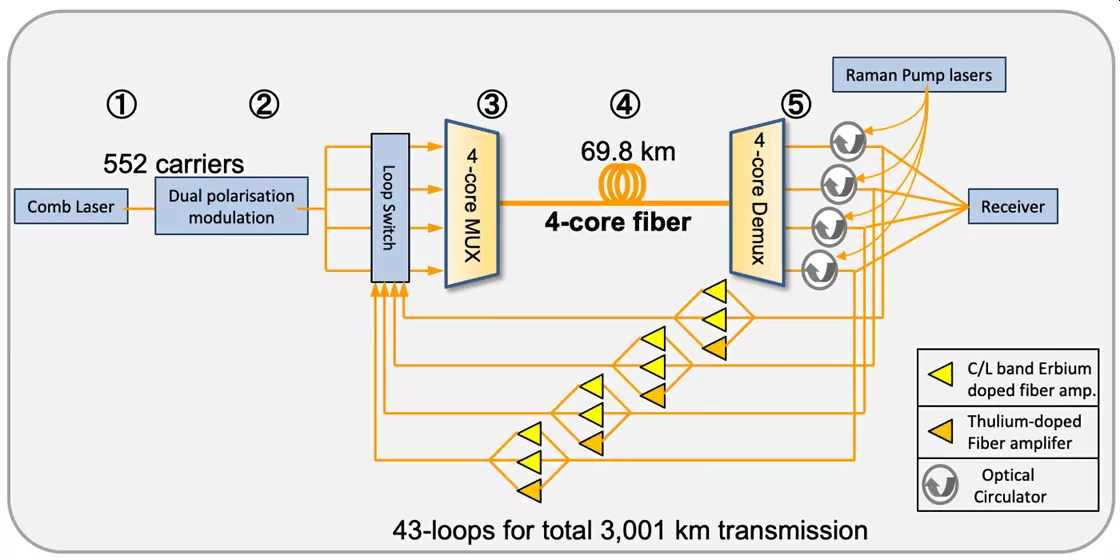Japan sets a new record for the world fastest internet speed of 319 terabits per second

Imagine if you could download more than 50,000 movies in just a second. Unfortunately, millions of people here in the U.S. are still paying hundreds of dollars per month only to get one of the slowest internet connections in the world.
According to a recent study by Ookla Speedtest, the U.S. ranks a shocking 31st in the world in terms of average download speeds. On the other hand, Hong Kong and Singapore are leaders in the world with 72.49 Mbps and 58.84 Mbps respectively.
The record for the world’s fastest internet speed goes to Japan at the rate of 319 terabits per second. This means you can download 57,000 full-length movies in 1 second, the report said.
In a research paper published last week, a team of Japanese researchers from the National Institute of Information and Communication Technology (NICT) in Japan demonstrated an internet speed of 319 terabits per second, breaking the previous record of 178 terabits per second set by engineers in Japan and Britain a year ago.
To achieve this engineering feat, the researchers, lead by Benjamin J. Puttnam, constructed a transmission system that makes full use of wavelength division multiplexing technology by combining different amplifier technologies, to achieve a transmission demonstration with date-rate of 319 terabits per second, over a distance of 3,001 km.
Using a common comparison metric of optical fiber transmission the data-rate and distance produce of 957 petabits per second x km, is a world record for optical fibers with standard outer diameter.
Their latest discovery uses advanced fiber-optic technology with a 4-core optical fiber of standard outer diameter of 0.125 mm to perform the speed test. Their demonstration shows the potential of SDM fibers with standard-cladding diameter and compatibility with existing cabling technologies for near-term adoption of high-throughput SDM fiber systems

“The 4-core MCF with standard cladding diameter is attractive for early adoption of SDM fibers in high-throughput, long-distance links, since it is compatible with conventional cable infrastructure and expected to have mechanical reliability comparable to single-mode fibers,” the Japanese research institute said in a paper published earlier this month.
NICT added that it was crucial to demonstrate how new fibers can meet the demand of apparent “explosive increase” from new data services. The research institute further noted that the result from the latest internet speed test will help the realization of new communication systems that can support the new “bandwidth-hungry services,” adding that they will continue to explore ways to further increase the transmission capacity of “low-core-count multi-core fibers and other novel SDM fibers.”
Below is how the research team describes their accomplishment.
Achievement
“NICT has built a long-distance transmission system around a 4-core optical fiber with a standard cladding diameter to exploit wider transmission bandwidth of >120nm across S, C and L-bands. The system exploits wavelength division multiplexing (WDM) and a combination of optical amplification technology to enable long-haul transmission of 552 WDM channels from 1487.8 nm to 1608.33 nm.
The system was used to measure achievable transmission throughput with each channel modulated with PDM-16QAM modulation at distances up to 3,001 km, where a data-rate of 319 terabits per second was achieved. This result may be compared to achievements in other SDM fibers and transmission regimes by calculating the product of transmission capacity and distance, often used as a comparison metric. The data-rate x distance product becomes 957 petabits per second x km, which is over 2.7 times larger than previous demonstrations in SDM fibers with standard outer diameter.
Long distance transmission, not previously demonstrated with S-band signals, was enabled by constructing a recirculating transmission loop experimental set-up that combined 2 kinds of rare-earth doped fiber amplifiers with Raman amplification distributed along with the transmission fiber itself.
The 4-core MCF with standard cladding diameter is attractive for early adoption of SDM fibers in high-throughput, long-distance links, since it is compatible with conventional cable infrastructure and expected to have mechanical reliability comparable to single-mode fibers. Beyond 5G, an explosive increase from new data services is expected and it is, therefore, crucial to demonstrate how new fibers can meet this demand. Hence, it is hoped that this result will help the realization of new communication systems that can support new bandwidth hungry services.”




